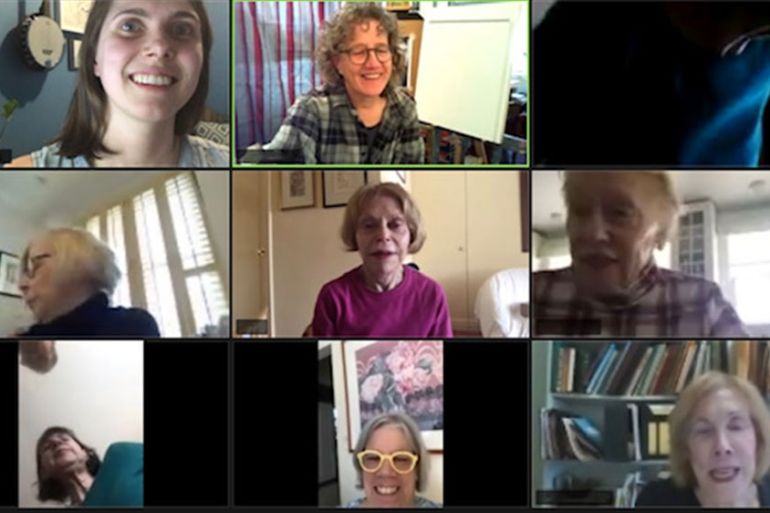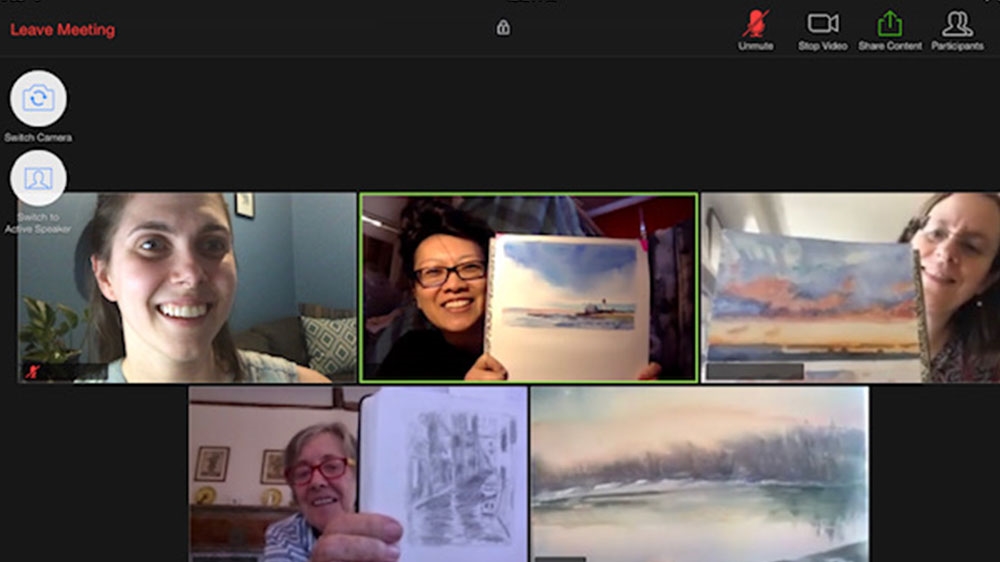How tech is helping elderly fight coronavirus lockdown loneliness
The COVID-19 crisis has provided an unexpected opportunity for some seniors to learn news ways to stay connected.

New York City – As COVID-19 continues to spread throughout the United States, Americans are adjusting to what it means to put their lives on hold. While the workforce has pivoted to remote arrangements and many young people are having virtual happy hours, many older Americans lack the necessary skills to stay connected through technology. But now, some organisations that serve senior populations are making strides to change that.
At New York City’s 92nd Street Y, the membership-based Himan Brown Senior Program provides classes, social groups, and other resources to 650 senior citizens. The Arts Center at the 92nd Street Y considers retirees to be the core audience for daytime programming. Between the two, hundreds of in-person classes were held on a weekly basis. On Friday, March 13, all 200 of the Arts Center’s classes went online.
Keep reading
list of 3 itemsLockdowns, closures: How is each US state handling coronavirus?
US Democrats postpone convention due to coronavirus
“Had we pitched remote learning under normal circumstances, I don’t think anyone would have bought in, but given the necessity of the situation [our seniors] were motivated,” said Emily Coyne, programme manager at the 92nd Street Y’s Arts Center, told Al Jazeera.
“They saw this as the only way to stay connected in a time of isolation,” she told Al Jazeera.
In order to make their offerings accessible, the team at the Y had to first select a platform. Like many offices, schools and other businesses, they chose Zoom for its user-friendly interface. At the Himan Brown Senior Program, they’re supplementing Zoom offerings with conference calls and emails for those who are less tech-savvy.
“It’s been a steep learning curve for everybody,” said Julia Zeuner, director of the Himan Brown Senior Program, “when we first started, we didn’t even have everybody’s email addresses.”

A lack of education about how to use smartphones and computers is often the biggest challenge for senior citizens. High-school sophomore Jordan Mittler started Mittler Senior Technology in 2018 when his grandparents got a smartphone, and he realised they could not use it.
“Seniors kind of missed the whole technology boom and don’t know how to communicate with friends and family via text messaging and FaceTime,” Mittler told Al Jazeera.
Mittler started teaching 10-week courses on the basics of computer, internet and smartphone use out of the computer lab at his school. The night before his most recent session was set to begin, all in-person courses were cancelled. With fewer than 24 hours to pivot, Mittler chose to try teaching his course over Zoom. It took a number of emails and individual phone calls, but 30 students logged on for his first online class.
“I actually came up with a totally new lesson plan that morning. I figured we could put my regular class on hold and focus on the news and FaceTime, which I think were more relevant,” said Mittler.
A lifeline
For senior citizens who have to take the most aggressive self-isolation measures in order to remain safe during the COVID-19 pandemic, offerings like these are a lifeline. With new technical knowledge, some seniors in quarantine are leading more socially active lives than before.
The 650 members of the Hiram Brown Program are receiving weekly check-in calls from 70 volunteer staff members, in addition to one-on-one tech support to help them attend virtual classes ranging from ceramics to chair yoga and memoir writing. The response from students has been overwhelmingly positive.
“This is the first time many of our students are interacting with this type of technology, and it was kind of like they were discovering magic for the first time. It’s been very heartening to see the looks of shock and joy, and surprise,” Coyne told Al Jazeera.
Jordan Mittler had a similar response from his students.
“I’m opening up their world in ways they never thought could happen,” he said.
Our silver lining in all this is that we have wanted to be able to offer remote programming to our members and to people who are homebound or in the hospital or rehab centres. Now we've built this platform that we plan to continue to use.
Digital programming for the elderly has also proven beneficial for the teachers and facilitators who work with them. Teaching artists are reflecting on their practices and how best to teach something like ceramics or jewellery-making without being in the studio. For the often younger people who are working to connect with the elderly, this work provides a mutual sense of emotional fulfilment.
“It’s been really great for me to be sitting in on these classes and seeing all these familiar faces in a time when I am at home, not really seeing anyone other than my husband. It’s been a source of comfort to keep that sense of normalcy,” Coyne told Al Jazeera.
Now that groups like Mittler Senior Technology and the 92nd Street Y have built out platforms to meet the immediate needs of their communities, organisers are starting to think of ways they can continue to use technology to expand senior citizen access to programming even after the spread of COVID-19 has been contained.
“Our silver lining in all this,” Zeuner said, “is that we have wanted to be able to offer remote programming to our members and to people who are homebound or in the hospital or rehab centres. Now, we’ve built this platform that we plan to continue to use.”